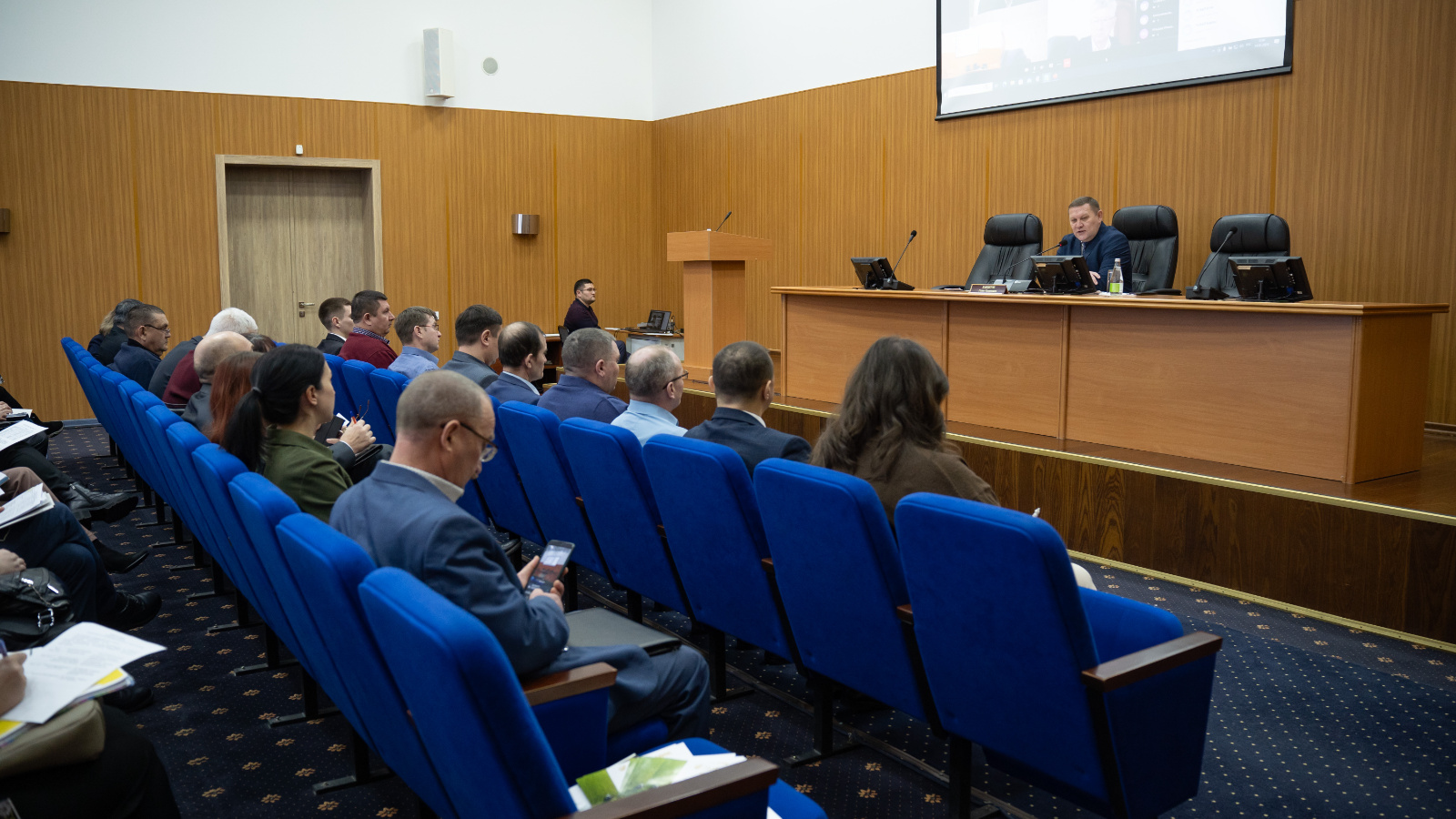The Ministry of Agriculture summed up livestock production results for the first month of 2024

Today, the Ministry of Agriculture and Food of the Republic of Tatarstan held a meeting with the districts, where they summed up the results of livestock production for the first month of this year. The meeting was chaired by Deputy Minister Gelyus Bayazitov.
The event was attended by livestock consultants, heads of selection and breeding services of agriculture and food departments in municipal areas and other responsible persons.
The head of the department for the development of livestock industries, Siren Nigmatzyanov, reported in his speech that in 1 month of this year, 144,615 tons of milk were produced, with an increase of more than 10 thousand tons, 108% compared to last year. In terms of productivity per cow, we are growing by 9%. 33 thousand tons of livestock and poultry meat were produced, which is 4% less than last year’s level. Cattle meat - 7.8 thousand tons, 96% compared to last year, pig meat produced 8 thousand tons, 104%, and poultry meat 17 thousand tons, 92% by 2023.
The number of pigs in large pig-breeding complexes as of February 1 was 447 thousand heads, with an increase of 1,300 heads. Agro-Stroy restored the livestock to 8 thousand heads, Kamsky Bacon increased it by 3 thousand heads, Navruz by 2.5 thousand heads. Avangard and Phoenix also increased their livestock from 200 to 600 heads.
The number of sheep in the republic amounts to 51 thousand heads. The largest increase is in the Nurlat and Arsk regions, more than 600 heads. From 350 heads Aktanysh and Pestrechinsky districts. Positive dynamics compared to last year’s level are also in Elabuga, Verkhneuslonsky, Zainsky, Agryzsky and Tyulyachinsky districts. Here the number of sheep has increased by more than 100 heads.
In January, 105 million 254 thousand eggs were produced, which is 94% compared to last year. The reduced percentage is associated with a decrease in poultry numbers. The biggest minus for the production of eggs at Ak Bars Holding Company is 3 million 280 thousand pieces less and Chelny Broiler - 994 thousand pieces less. The production of eggs was increased by the farm of Shangaraev D.M., “Zarya” of the Muslyumovsky district, and the peasant farm of Zainullin of Nizhnekamsk. Here the growth is due to an increase in the number of livestock. The Breeding Reproductor of the Bugulminsky District has restored its production.
“It is necessary to bring identification to 100% for all types of animals, otherwise from September 1 it will be impossible to sell livestock products through the Mercury system,” concluded Siren Nigmatzyanov.
Next, the head of the department of breeding and animal reproduction, Damir Minnebaev, made a report. In his report, he reported that in January of this year, 23.7 thousand calves were received, 28.2 thousand heads of cows and heifers were inseminated. They also worked successfully for the insemination of cows and heifers on private farms.
Next, Damir Minnebaev spoke about the development of breeding beekeeping for 2024. The Ministry of Agriculture and Food of the Republic of Tatarstan provides support to breeding farms by allocating a subsidy to reimburse part of the costs associated with the production and sale of bee packages of the Central Russian breed, the Central Russian breed of the Tatarstan type of bees. Only breeding farms that operate on the territory of the republic, are healthy in veterinary terms, conduct targeted, documented zootechnical records and scientifically based selection and breeding work using the instrumental method of insemination of bees, with confirmation of the authenticity of the origin in the laboratory of genetic analysis of breeding products.
The subsidy is calculated at a rate of 50% of the sales cost excluding VAT, but not more than 2.5 thousand rubles for 1 bee package. There are mandatory requirements for a breeding reproducer regarding the number of bee colonies; there must be at least 200 of them. The requirement for the sale of breeding bee packages during the reporting year is at least 20% of the availability of bee families at the beginning of the year, provided that the number of bee families is maintained at least at the level of the previous year.